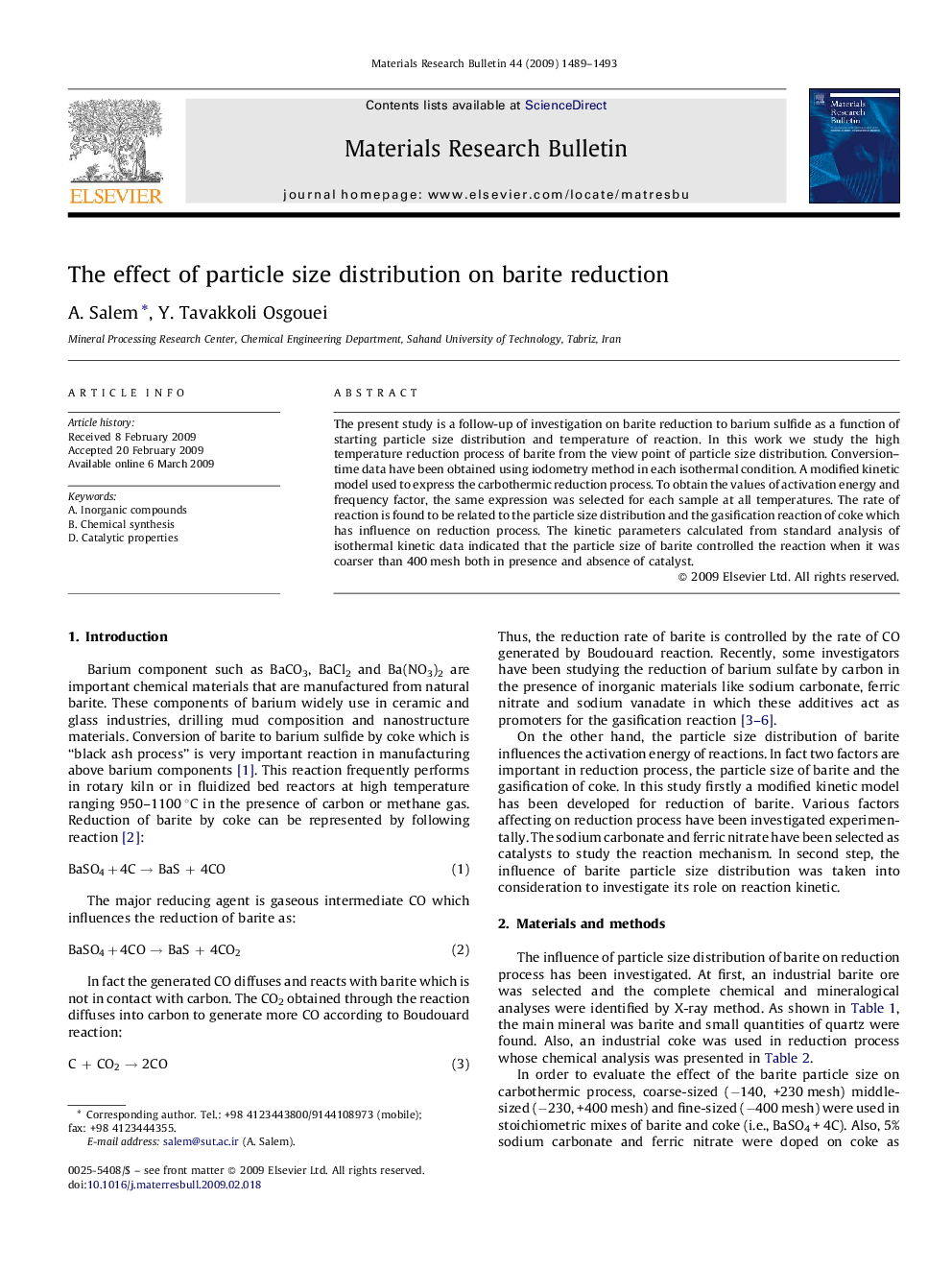| Article ID | Journal | Published Year | Pages | File Type |
|---|---|---|---|---|
| 1491180 | Materials Research Bulletin | 2009 | 5 Pages |
The present study is a follow-up of investigation on barite reduction to barium sulfide as a function of starting particle size distribution and temperature of reaction. In this work we study the high temperature reduction process of barite from the view point of particle size distribution. Conversion–time data have been obtained using iodometry method in each isothermal condition. A modified kinetic model used to express the carbothermic reduction process. To obtain the values of activation energy and frequency factor, the same expression was selected for each sample at all temperatures. The rate of reaction is found to be related to the particle size distribution and the gasification reaction of coke which has influence on reduction process. The kinetic parameters calculated from standard analysis of isothermal kinetic data indicated that the particle size of barite controlled the reaction when it was coarser than 400 mesh both in presence and absence of catalyst.
